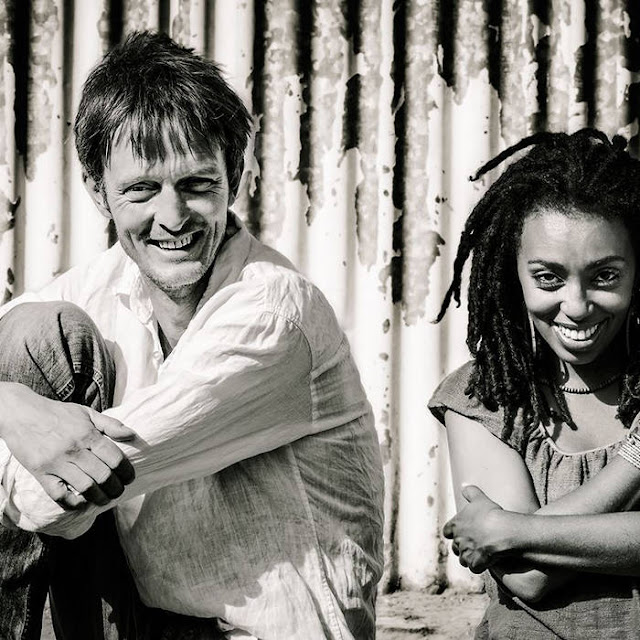R E U P L O A D
The Ethiopian term “Eskesta” means “Dancing shoulders.” It is often practiced in the Northern parts of Ethiopia (Amhara group) where the indigenous tribes of Amhara, Wollo, Gondar etc. are still performing the dance of Eskesta. The motives and characteristics of the dance are often interchanged during the dance by the performers of the variety of war songs, hunting songs, Shepherd songs, love songs and work songs. The best dancer is appointed to the leader of the group and respectively the best singer.
The eskesta dance transmits ideas, religious beliefs, historical events, ancient stories, emotions, thoughts, through a ritual of shoulder dancing and body movements performed on a certain musical background. One of the main dance motives and movements that are implemented in the ritual of performing of Eskesta are as follows: the Shepherd and his herd, religious commitment and praying (Coptic dance, Jewish roots) and as a matter of meditation.
Ethiopia Eskesta - Jaivah African Dance
The extraordinary diversity of dances is a result of different cultures and people, often organized horizontally (grouped in space) in comparison to the European people who are vertically stratified. According to some analysis, the Ethiopian dances are not divided according to their function, but according to their uniqueness and individuality. Therefore, there are over 150 unique dance movements across Ethiopia and its regions.
The theme of Eskesta can be described as follows – expressing certain emotions and impressions from the life through a typical body movement dating back to an Ethiopian tribe (Amhara region), performing these mainly with their heads and shoulders. These significant movements are having a great impact on the Ethiopian indigenous society as a whole. Some of the ideas and themes in this dance are actually inspired from the relations between the genders, work life and religion.
It also is said that this dance was invented because of the snakes. Ethiopian people were often observing the “dance”/movements of the snake, shaking in the same way their neck. On the other hand, in the sphere of indigenous Ethiopian music the influence of the rattlesnake while shaking its tail (the sound it produces) has created a certain way of singing as well.
Furthermore, other symbols and rituals that can be described are these connected with the costumes which each dancer wears. They are often made of woven cotton called “gabbi” or “netella” and painted with different colors depending on the gender of the dancer.
Eskesta is a dance performed both from men and women with their head, neck, chest and shoulders, shaking in specific ways; the music played during the dance is often produced with the traditional Ethiopian instruments like krar, flute, drums and mesenko. The dancers sometimes sing or in some places of the dance utilize the silence in order to stress out some prevailing moments of the dance. There are however some variations depending on the areas in which this dance is performed – Wollo, Gondar or Gojjam.
Historical context – Ethiopia is a widely diverse country with over 80 unique rich ethnic, cultural, custom and linguistic groups. One of the most significant areas in Ethiopian culture from which actually the other spheres developed further is the literature, representing Hebrew and Greek religious texts into the ancient Ge’ez, modern Amharic and Tigringa languages. This cultural heritage shaped some of the Ethiopian dance motives. However, the unique step and rhythm creates a certain motive of “mosaic culture”.
Similar dances can be found in Western Africa, where indigenous dances are performed with head (with sort of tie on it) and arms, especially in the tribe of Conakry, Guinea.
The dance Eskesta brings the dancer into a certain role of history and story-teller, who actually expresses and draws with his/her body the cultural traditions and life. The dance, as well the music and singing are serving as symbolical messages and influences on the Ethiopian society.
Interpretation ethics – while enjoying the Eskesta dance accompanied by the music one can truly start travelling back in the time. These music and dances are dating 3000 years back in the African history – so unique and undiscovered from us, the Europeans. In this context, one can think of the religious variety implemented in the dances and music in Ethiopia as a whole – Orthodox Christian and Muslim motives playing the role of shaping the culture and traditions of this nation.
Eskesta is very interesting to be observed – dancing in the beautiful Ethiopian nature, within the herds of animals making Eskesta an very expressive type of dance. Eskesta itself is providing positive emotions to the public and in the same time creating deeply spiritual atmosphere in which the observer cannot find his/herself easily. Namely this cultural confusion serves as the one that hinders us exploring the dance fully. Ethiopian dance is not something we, the Europeans can understand. Behind the apparent body shaking there are situated deeply cultural and hereditary connotations.
01 - Minale Dagnew - Hodye (5:14)
02 - Admasu Wube - Erikum (6:06)
03 - Tesfaye Workneh - Wubet (10:17)
04 - Taddesse Alemu - Gondar (9:05)
05 - Genet Masresha - Shebel (7:30)
06 - Taddesse Alemu - Minjar (5:20)
07 - Yeshimebet Dubale - Gojjam (8:03)
08 - Hayleyesus Girma - Gedame (7:18)








